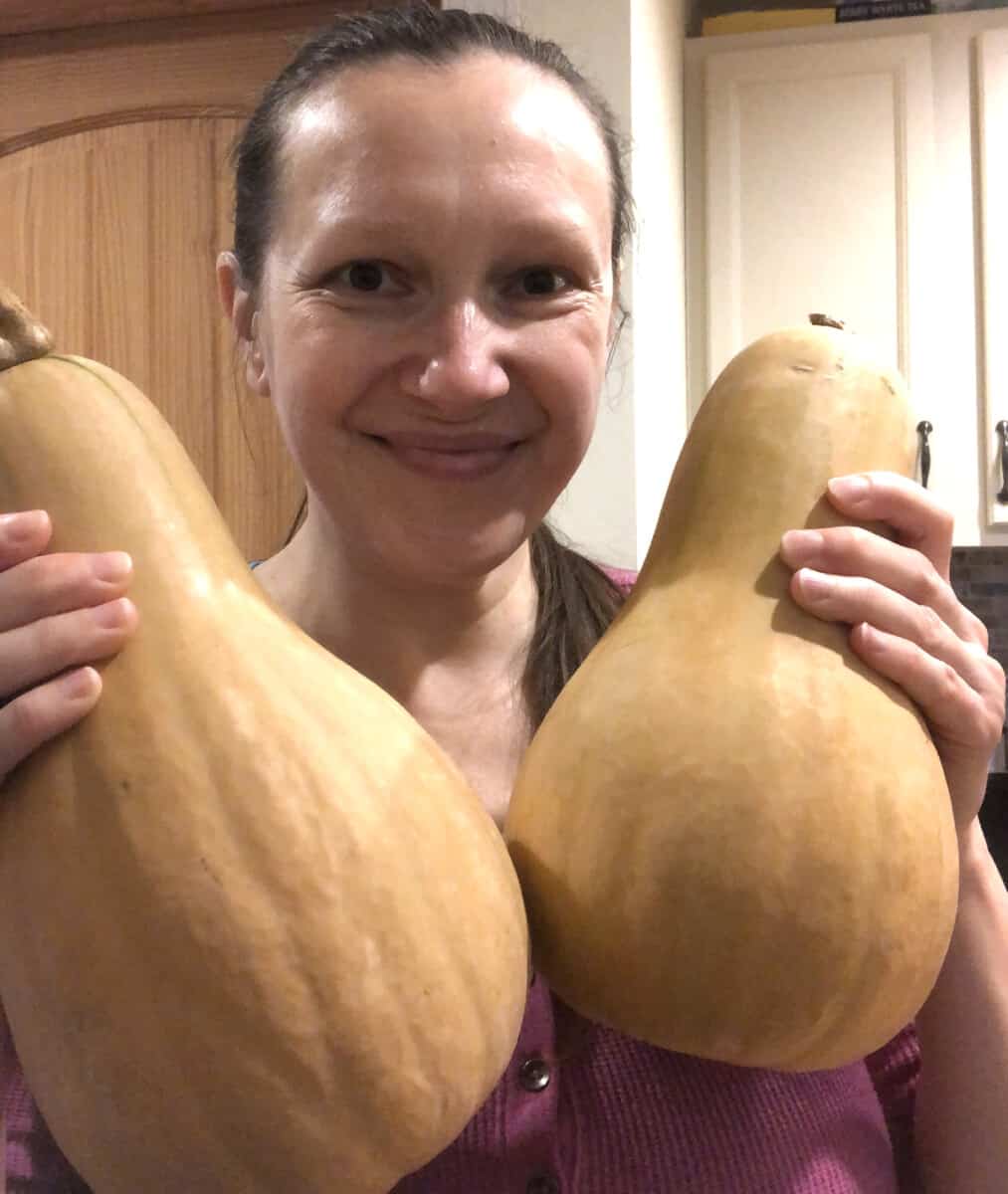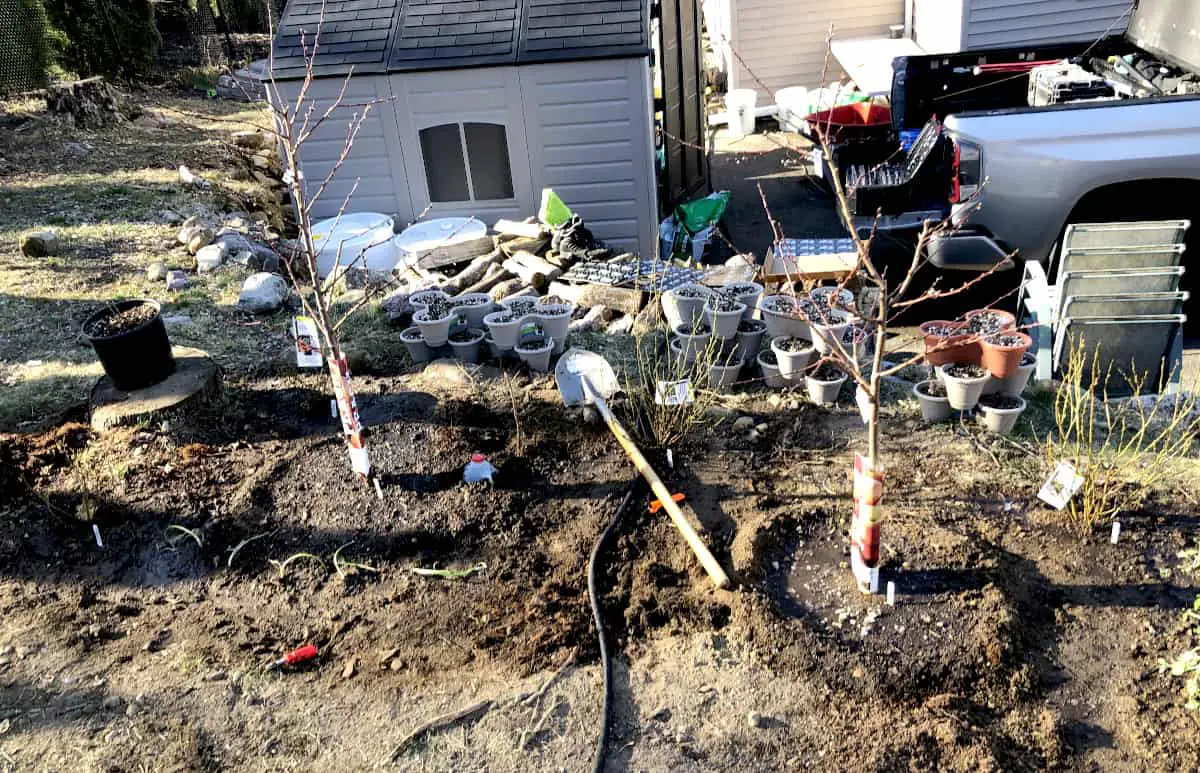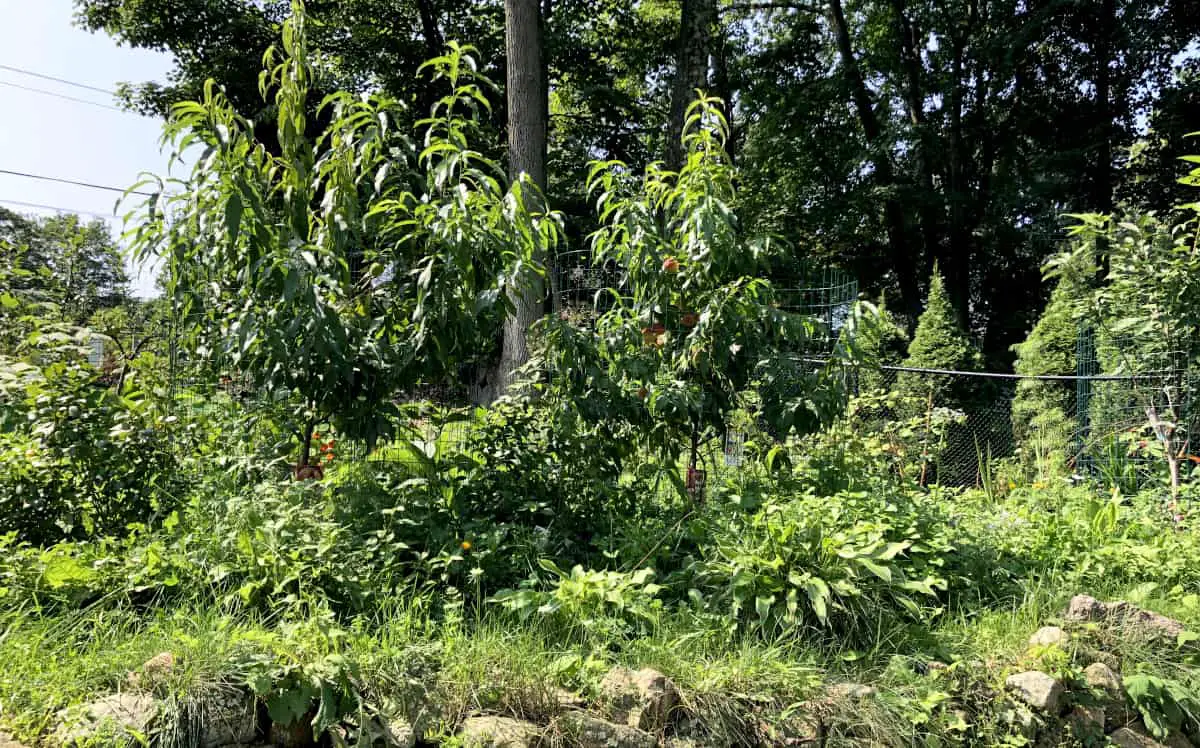Whether you have a large or a small garden we all like to see high yields coming out of it. I enjoy growing heavy crop producers as much as you do. Since there are many heavy-yielding fruit and vegetable plants let us take a look at them one by one so we would be able to not only identify them but also integrate them into our growing space this year.
Most high-yielding fruits and vegetables to grow in a pantry stocking garden are perennial fruit trees including apples, plums, peaches, apricot, cherry, and pear. Fruit bushes and canes like blackberries, currants, and raspberries. High-yield vegetables are tomatoes, cucumbers, beans, zucchini, greens, peppers, potatoes, carrots, parsnip, onion, garlic, and herbs. I also count winter squash, butternut squash, and spaghetti squash as my favorite high-yield veg, because of how heavy their fruit is. With just one butternut squash I can feed my family for dinner! I usually get 2 butternut squash per plant. Some winter pumpkins are so large you can get multiple dinner meals off of one fruit.

How to identify high-yielding fruit and vegetable
Identifying high-yielding fruit and vegetable is fairly easy. It’s the fruit and vegetable that yields substantial harvest just from just one plant, or from a very small amount of space. It’s fruit and vegetables that you can harvest, then come again to the same plant and harvest some more, even several times.
Let’s compare high-yield vegetables with low-yield vegetables, let’s say tomato plant versus cauliflower. An average indeterminate tomato plant can grow several pounds of tomatoes. You harvest some red tomatoes and see some still green tomatoes. Give some time for the green ones to ripen, and in about a week to two you come to pick them ripe. Meanwhile, the tomato plant grew bigger and produced more flowers and more tomatoes. Give it a couple more weeks and you can come again and harvest more tomatoes off of the same plant. This is called a high-yield plant.
Now let’s look at cauliflower. Cauliflower is one of my favorite vegetables and I grow them every year. I like the flavor and the look. But you can only harvest one cauliflower head off of one plant. After you harvest your cauliflower, that is it. One cauliflower seed gave you one head of cauliflower.
Do you see the difference between high-yield and low-yield veggies now?
Now, you can ask, why did you include carrots, garlic, and onions in high-yield crops? It’s because they yield much in a very small space. For example, you plant one clove of garlic but get 5-10 at the harvest.
Regarding carrots and onions, you plant about 16-25 carrots in just 1 square foot! The same goes for parsnip. You can grow about 9 onions and garlic heads per 1 square foot.
When I look for a high-yielding vegetable, I look at how much can I get off of one plant, how much can I get off of one square foot, and how large and heavy their fruit is, like pumpkins for example.
High-yield perennial fruit
In my opinion, nothing can beat perennials! Perennials are plants, trees, bushes, and canes you plant once and they produce year after year. When looking for high-yield fruit, go for perennials. Especially when looking to plant fruit in your garden. Fruit trees are very high-yield and reliable sources of sweet treats like apples, pears, plums, cherries, apricots, nectarines, and peaches.
Other of the best fruit perennials are bushes and canes including blackberries, currants, and raspberries.
I remember growing up we had a wall of blackberries and a raspberry patch. I loved coming home from school in summer and stuffing myself with delicious berries-that was my lunch. We had about 2 feet wide and about 21 feet long wall of blackberries and we were never able to eat them all. Once mature, they produce like crazy.
Yes, it does take time for perennials to grow to their full maturity, but it is so worth it. I am willing to wait a year or two or even three years to have a continuous harvest of delicious sweet fruit year after year.
One of the best pieces of advice there is, is to plant a fruit tree as the first thing in your garden. Because it takes time for the tree to mature. But years pass by quickly, and you will ask yourself where all those years have gone. Suddenly, you will be able to harvest large fruit yield year after year.
I remember I didn’t do that in our new home and I regret it. I was young and knew nothing about gardening. But now that I enjoy gardening so much, and it is such an important part of our daily lives, I have several fruit trees and every year I add more.
Just to encourage you, I will share my very positive experience with you. The year I decided to plant fruit trees in our garden, I bought two peach trees from a big box store. I knew nothing about trees or where to buy them. I even asked my local online group of gardeners whether I should buy trees from a big box store or not. I received mixed answers. I went for it because I know I want to see the tree I am buying to inspect it, and I knew it was better to act rather than procrastinate. We bought the peach trees in early April and harvested about 8-10 pounds of peaches off of those two trees in August! I couldn’t believe it. I thought I would have to wait for years, but not! I had harvested peaches the year I bought the trees. I was sorry I didn’t plant them earlier.

Since then, I expanded to blueberry bushes and raspberries. I also added blackberries but they were super thorny ones so I had to get rid of them. I wasn’t happy with those sharp thorns and small fruit. Lesson learned, not everything you see at the store is fit for your garden. This year I hope to plant thornless blackberries with large fruit.

What vegetables and fruit are best for small garden
High-yield fruits and vegetables would also be your best choice for small gardens, limited spaces, and container gardening. Many of those high-yield crops are root and bulb vegetables like carrots, parsnip, beets, garlic, and onions, and grow very well in buckets and containers. Other high-yield produce like cucumbers, tomatoes, pole beans, winter squash, or even zucchini can be grown on trellises or in tomato cages and thus are great space savers.
Regarding herbs, they can be used to plant in between various crops as pest protection and around your tall and trellis climbing plants. When herbs bloom, they are also good for pollinators.
If you have grown any of those amazing high-yield veggies and fruits you know exactly how much they deserve the prime space in our pantry stocking gardens. And if you have never grown any of the high-yield corps, I would like to strongly encourage you to give them a try. I also hope that this article was inspiring enough for you to not only consider them but include them on your pantry stocking garden list this growing season.

